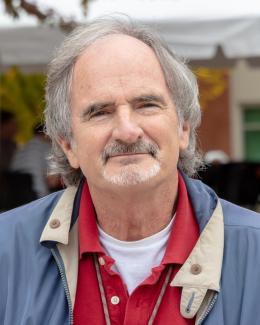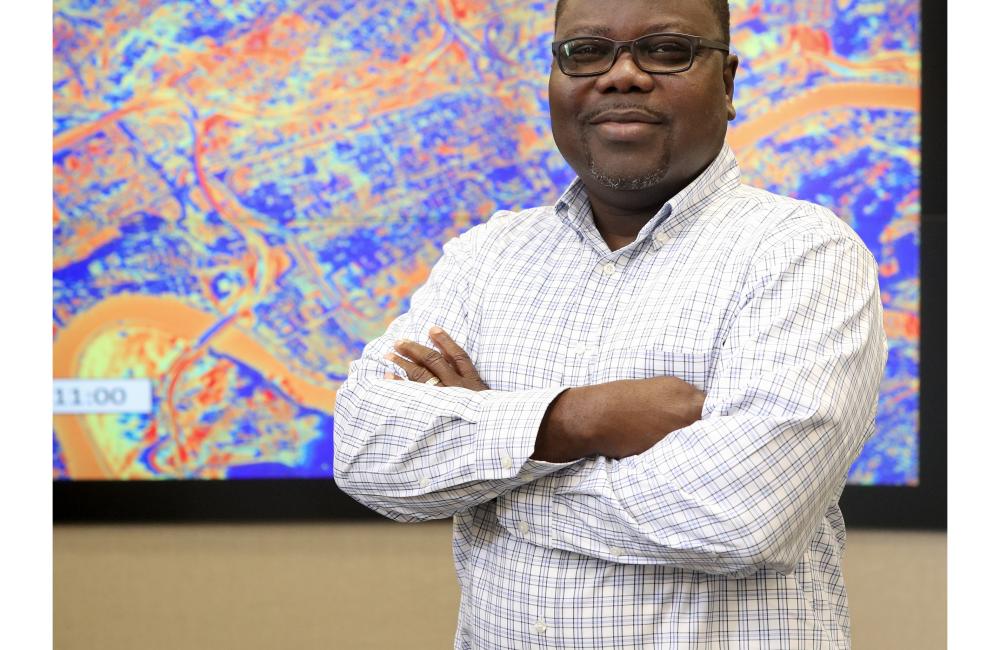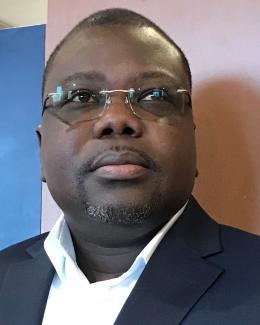January 22, 2018 – At the Department of Energy’s Oak Ridge National Laboratory, Olufemi “Femi” Omitaomu is leveraging Big Data for urban resilience, helping growing cities support future infrastructure and resource needs.
A senior research scientist for ORNL’s Computational Sciences and Engineering Division since 2012, Omitaomu is interested in the relationship between people and infrastructure in urban areas.
“What we do, where we go and how we get there all have an impact on our cities and the resources upon which we rely,” he said. “It is important to understand how people interact with infrastructure in their community to identify risks and inform decisions that will ultimately help us build better, more efficient, more resilient cities.”
Omitaomu had no idea when he began his career that he would be modeling infrastructure interdependencies in an emerging urban science. He joined ORNL’s Geographic Information Science and Technology group in 2006 with a doctorate in industrial engineering and a passion for “squeezing data.”
“What I do is make sense of data,” he said. “Whatever the data or wherever they come from, I want to be able to squeeze them and make them talk to me.”
His data science and computing skill set has wide research and industry applications. For his doctoral work at the University of Tennessee, Omitaomu focused on manufacturing systems.
Omitaomu was initially recruited to ORNL to work in transportation security. Now he works jointly with the Urban Dynamics Institute and the Climate Change Science Institute to improve the reliability and efficiency of urban systems like water, energy, electricity and transportation.
An explosion of Big Data within the last decade—from new sensing technologies and the surge of data-collecting devices like smartphones that track everything from location to medical history—has given dataphiles like Omitaomu an incredible opportunity to assess infrastructure resilience and respond to the challenges associated with urbanization that include increased energy demand and climate variability.
“Urban systems are all connected and interdependent, which is part of their challenge and appeal for researchers,” explained Omitaomu. “When there is a disruption to one it impacts the other. Without electricity, there is nothing else. You cannot run any other system without power. Transportation is disrupted because traffic lights don’t work. Stores are closed because there are no lights. We cannot get fuel because gas pumps do not operate. These are computationally complex problems that invite novel data science and computing approaches.”
As the team lead for Critical Infrastructure Modeling and Climate Impacts at CCSI and the theme lead for Urban Resiliency at the UDI, Omitaomu helps develop analytical tools and resources that enable government, industry and city stakeholders to make informed decisions and devise strategies for urban resilience.
He has contributed to a number of projects that enhance situational awareness nationally, such as Urban-NET, a decision support tool that models interdependent critical infrastructure networks and identifies vulnerabilities, and EAGLE-I (Environment for Analysis of Geo-Located Energy Information), a real-time energy-sector monitoring and analysis tool. Omitaomu’s effort to “virtualize” the U.S. electric power grid through smart optimizations and sensing technologies was recognized by an ORNL Significant Event Award.
A core objective of the UDI and CCSI is to extend data resources in a relevant way to users at the city level. “We want to provide these resources not only to federal users but also put them in the hands of cities in order to inform urban planning decisions at the local level,” Omitaomu said.
Omitaomu collaborated with the city of Knoxville to develop Urban-CAT (Urban Climate Adaptation Tool), which aims to help mid-sized cities like Knoxville understand how temperature shifts, rainfall, flooding, population movement and other factors will affect urban populations. The interactive tool allows city users to test “what-if” scenarios and examine the most efficient and cost-effective strategies for adaptations like minimizing storm water flooding and incorporating trees and other green infrastructure into urban ecosystems.
He is currently working with Knoxville to develop a precision de-icing technology that will help cities manage roads during seasonal snow and ice. Winter road treatments come at a high cost to cities, and accumulated salts also take a toll on the environment. The intelligent approach will help cities allocate resources, minimize waste, and expand coverage to increase safety on critical roads.
The goal is to help cities become more resilient, Omitaomu said. “Mid-sized cities, like Knoxville, are facing unique challenges, but they are also still growing and have an opportunity to build sustainability into their systems as they develop.”
ORNL is managed by UT-Battelle for the DOE Office of Science. The single largest supporter of basic research in the physical sciences in the United States, the Office of Science is working to address some of the most pressing challenges of our time. For more information, please visit energy.gov/science.—by Ashley Huff




